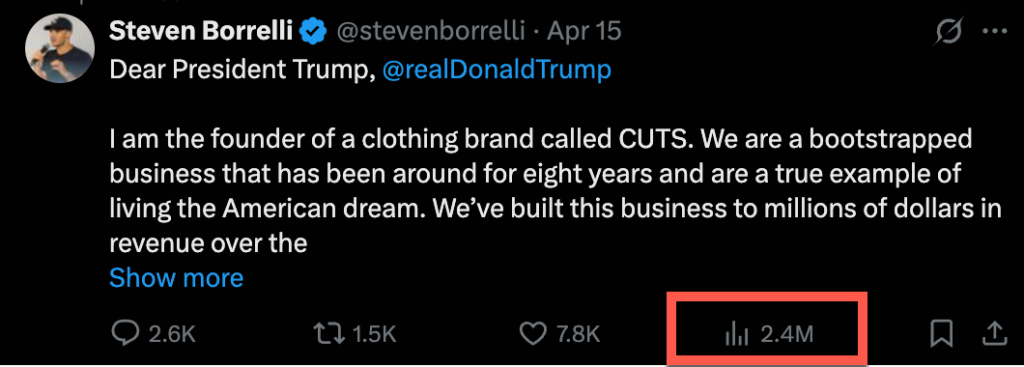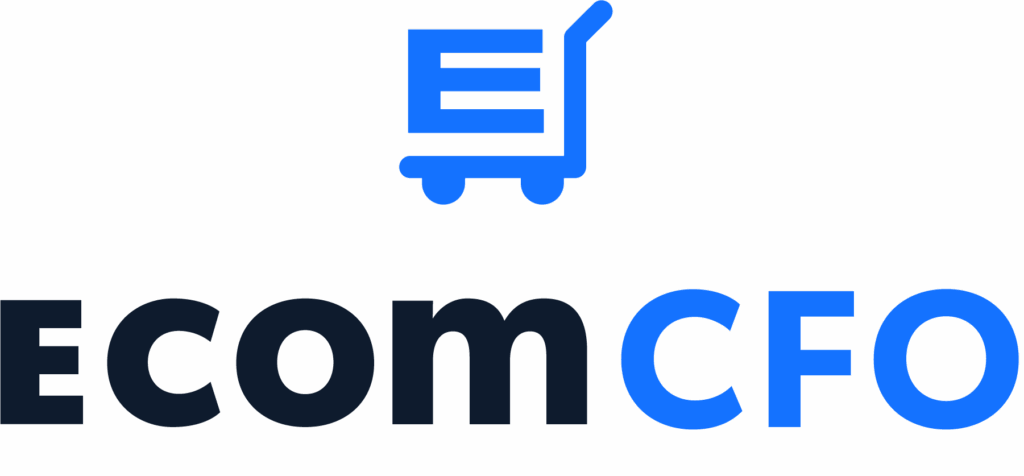As a firm, we don’t know everything about everything.
We help founders understand the financial implications of their decisions. But when it comes to thinking through those decisions, we do our best to pull in experts on those topics – be it CRO, the best ad platforms, or in this case, tariffs.
Your CFO should do the same.
Ryan Petersen is the founder and CEO of Flexport, one of the biggest supply chain management companies in the US.
Between their software – which is used to manage billions in trade – and their hands-on services, few people in the world have more insight into what’s happening on the ground right now, so we caught up to talk:
- How brands are responding to tariffs
- What steps founders are adding to their supply chain workflows
- Who specializes in this stuff and where to find them
- Advice for leading through crisis
As with most of what we’ve written about tariffs, this email’s evergreen.
Take action on what’s in here, and your company will be stronger for it, even after tariffs fall out of the headlines.

What are you seeing as brands respond to tariffs?
Upstream there’s a lot of renegotiation going on with suppliers, but it’s not a good time to move manufacturing.
“You’re either too late or too early to do that right now,” he said. If you haven’t moved already, you might as well wait and see what the new rules are in ~90 days.
What people are moving now is their inventory – headed for either bonded warehouses or foreign trade zones.
Both are special warehouse designations that let you defer duties until goods leave the warehouse. That deferral can help your cash situation, but there’s an important difference between them:
When it’s time to pay, Uncle Sam decides your duty rate based on…
- Foreign Trade Zone: The prevailing rate the day the goods enter the warehouse
- Bonded Warehouse: The rate on the day the goods leave the warehouse
The one you want depends on whether you think duties are going up or down from here.
“You are now in the gambling business whether you like it or not,” Ryan said. “But either way, these are probably better than just paying the duty and the time of entering the country.”
How creative are founders getting with their supplier negotiations?
“You have to be careful not to get too creative,” he said. “We’ve seen some deals that are borderline fraud.”
For example, factories telling buyers not to worry about paying the duties, claiming that the government is subsidizing their rates.
“It’s not true,” he said. “They’re lying. They’re declaring the import value at a much lower rate, and if they get caught, they just disappear and create a new shell company.”
Meanwhile, you’ll be on the hook with CBP.
So remember, if it sounds too good to be true, it probably is.
Still, there are a few places founders can find legal savings. Ryan’s trade advisory team has a list of 11 things they check for clients. Some of the most common are:
- Product Classification: It’s illegal to reclassify your imports solely to lower your duties – you must classify accurately. But brands are spending more time on this now, triple-checking to make sure they’re not paying more than needed.
- Legal ways to decrease or defer valuation: If you do CapEx or R&D for your manufacturer overseas, those costs are included in your valuation. But you can do something called an “assist” to defer some of them, lowering the duties you pay at any given time. The “First Sale Rule” can also decrease valuation, and thus, duties
- Duty Drawbacks: If you import something, and export it later, you’re entitled to a refund on some of the duties you paid. It doesn’t have to be the same physical item. If it has the same HS code or is a product that contains the component you imported, you may qualify. Every year $7B in refunds goes unclaimed (and that was before the duties went way up).
This stuff is technical. There are laws involved. So don’t wing it based on some podcast (or this email).
But there’s significant opportunity here.
Take duty drawbacks as an example – average checks are six-figures and up for eligible brands (Flexport’s record is $14m for a client), and you can go back 5 years to claim them.
If you don’t have five years of import records, your broker should. They’re required to keep that much by law. You can also get them by accessing ACE from the US government. Flexport also has a team dedicated to this for clients, and simplifies a lot of the data handling.
Are brands adding new roles to their team to deal with this stuff?
Short answer: No.
The practice is called “Trade Advisory,” and brands don’t typically in-house it because you tend to need it in a surge, then not again for a while.
While there are some specializations, like tariff engineering – literally designing product specs to optimize around tariffs – most of the people working in this field are generalists who’ve spent a long time in supply chain.
Any advice to founders on leading through this period?
Ryan’s adopted this great four-part crisis framework, borrowed from Brian Chesky when covid hit:
- Preserve Cash
- Be Decisive
- Take Marketshare
- Be the Hero
Of the four, the most interesting for brand owners right now might be the last. While things are tough, it’s creating opportunities to get press you couldn’t get before.
“There’s definitely this moment,” he said, “where you, as an ecom CEO, have a perspective about something that’s in the news, that ordinary people care about, and that journalists definitely care about.”
If you share publicly about how this is affecting your brand, journalists who would never cover you otherwise might tune in.
He points to Sean from Ridge Wallet, and Steven Borrelli’s now-viral tweet about the impact on Cuts Clothing.

“You and your competitors are all facing the exact same landscape,” he said. “It’s how you play the game right now that’s going to differentiate who’s going to win.”
Be sure to follow Ryan on X for more insights like this. Flexport’s Youtube channel is also an excellent source for deep, nuanced looks at the nitty-gritty of supply chain & logistics.

